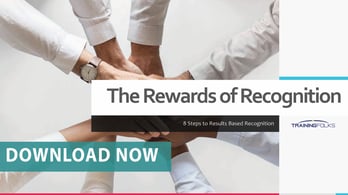The Essential Components of an Employee Onboarding Strategy
A 2022 survey by Employ found that one in every three new employees now quits in the first 90 days. Over time, high turnover can cost your organization tens if not hundreds of thousands of dollars in administrative resources, recruiting efforts, and lost productivity.

This is why employee onboarding is so important, especially in the Great Resignation era. By providing new employees with the resources and support needed to succeed, your organization can minimize employee churn, improve productivity, and strengthen workplace culture.
Considering that only around a third of employers provide employee onboarding and orientation, it’s possible that your organization is looking to improve its employee orientation and employee onboarding practices. So what is the difference between orientation and onboarding?
Employee orientation refers to the process of introducing new employees to the company and its culture, policies, and procedures. It typically includes a formal introduction to the organization, an overview of company history and mission, and information about benefits and compensation.
Onboarding, on the other hand, is a more comprehensive process that goes beyond orientation and includes activities and initiatives designed to help new employees integrate into the company and become productive members of the team. It often includes training, mentoring, and ongoing support to ensure that new hires have the necessary resources and support to succeed in their new roles.
Overall, Employee orientation is a one-time event that provides new hires with an overview of the company, while onboarding is a process that continues throughout the first few months of employment and helps new hires become fully integrated into the organization.
What is the goal of onboarding?
The goal of onboarding is to give new employees a solid foundation for long-term success in their roles. Onboarding is often confused with basic, day-one orientation tasks like filling out paperwork and making introductions. In practice, effective employee onboarding goes much further, helping new employees integrate into the workplace culture and validate their decision to take the job offer. It also helps employees become productive faster and can make a lasting impact on retention.
Onboarding can last many weeks or months after an employee’s first day, and typically involves:
-
Preboarding: provides necessary paperwork and other practical information before an employee’s first day.
-
Orientation: educates new hires about the organization’s values and culture, assigns a mentor, clarifies the employee’s roles and responsibilities, introduces team members, and offers a workplace tour.
-
Training: equips new hires with the skills and resources needed to complete their day-to-day tasks.
-
Role adaptation: provides measurable, realistic goals, ongoing mentor support, and as-needed professional development opportunities.
What are the essential components of onboarding?
If you are building or refreshing your organization’s onboarding strategy, it can be helpful to break down an onboarding program into four key elements: resources, rules, roles, and relationships.
Resources
What do your new employees need to complete their tasks successfully? Employee Onboarding programs give new hires necessary tools—such as software, equipment, or office supplies. Employees should also have access to resources on how to use tools and equipment and know who to ask for support if required.
Rules
Most organizations have established policies and guidelines to keep operations running smoothly. These should also be integrated into an onboarding program. Consider rules such as standard operating procedures for a new employee’s role, communication standards, and conflict resolution processes.
Roles
One of the main causes of high turnover and workplace conflicts stems from a lack of clarity when it comes to defining an employee’s roles and responsibilities. Onboarding programs should set clear guidelines about an employee’s tasks, priorities, and key performance indicators, as well as how work is delegated between team members—especially if there’s potential for role overlap.
Relationships
Successful onboarding goes beyond providing ad-hoc introductions. An employee onboarding program should educate new employees about their team members’ roles and responsibilities, help them integrate into the workforce, and even assign a mentor. Some organizations also assign team-oriented tasks during onboarding to help new employees establish supportive workplace networks and relationships.
The takeaway
Knowledge Check 1: What is the goal of onboarding?
-
The goal of onboarding is to give new employees a solid foundation for long-term success in their roles by helping them integrate into the workplace culture, validate their decision to take the job offer, become productive faster, and make a lasting impact on retention.
Knowledge Check 2: What are the essential components of onboarding?
-
The essential components of onboarding include resources, rules, roles, and relationships. Resources provide new hires with the necessary tools and equipment, rules cover established policies and guidelines, roles clarify an employee's duties and responsibilities, and relationships involve building connections and support networks within the organization.
Since the COVID-19 pandemic, employers have adapted to the realities of higher employee turnover and a shift to remote work. These factors are reinforcing the value of a quality onboarding strategy, which can not only save your organization money but also establish a healthy culture and ensure long-term productivity with a skilled workforce. Regardless of your new employee’s role, you can achieve these goals by ensuring they have the resources needed to do their job, know your policies and procedures, have a clear understanding of their roles and responsibilities, and have the support to establish relationships with their team members.
If you found this blog helpful and want to learn more,
be sure to download our FREE eBook:
The Rewards of Recognition: 8 Steps to results-based recognition.

Don't miss out on this opportunity to get this valuable eBook.
Download now!

